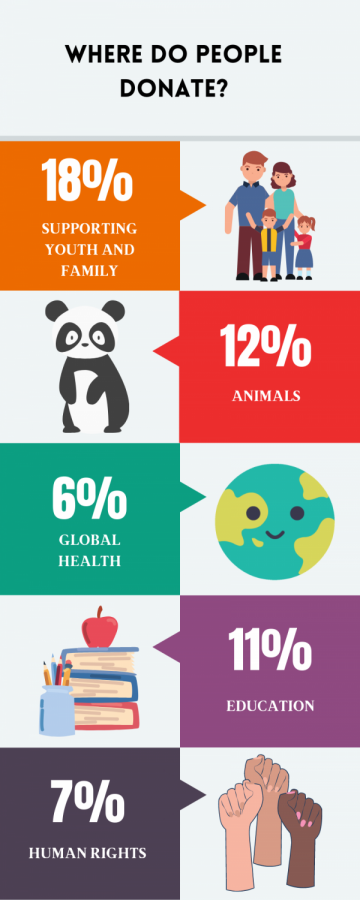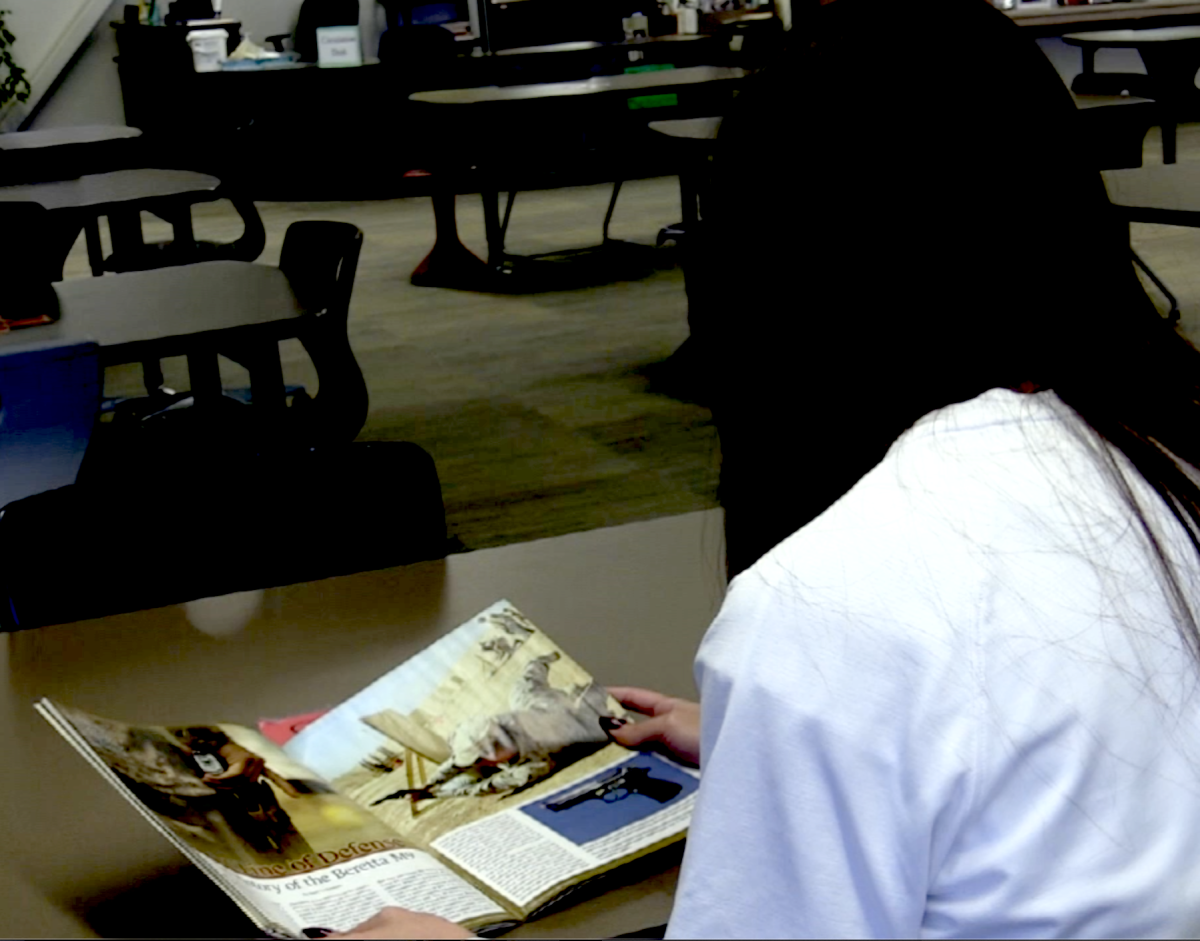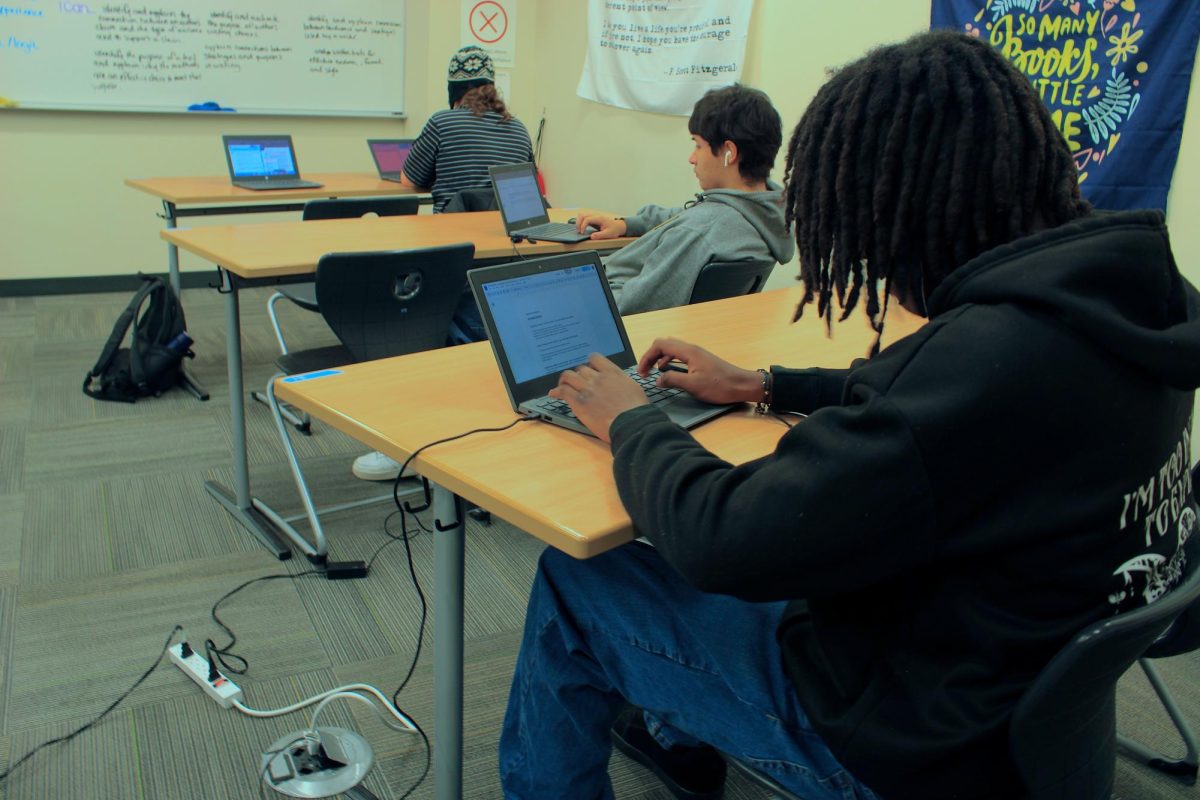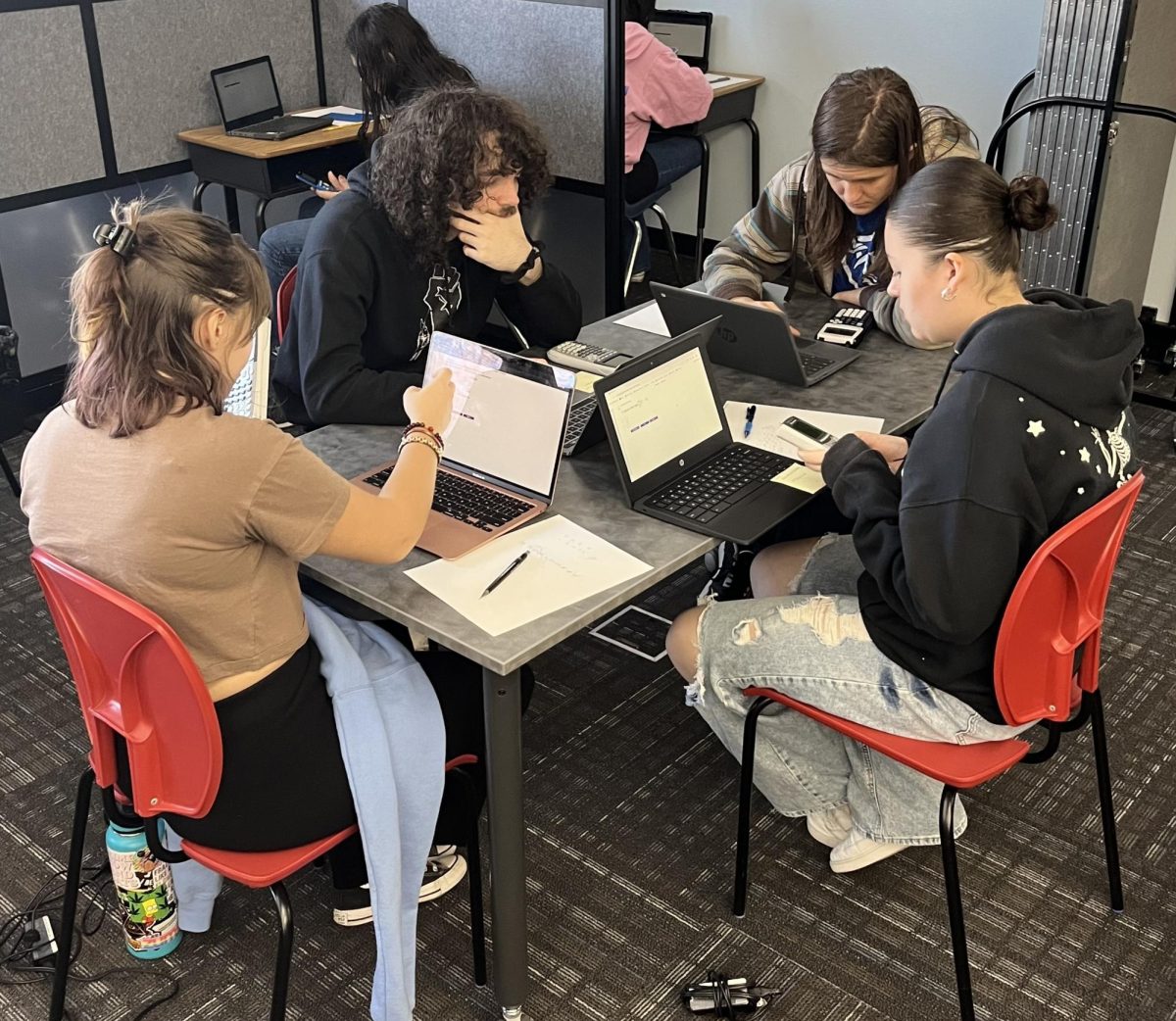Update: Englewood residents voted YES on ballot measure 4A. The MILL LEVY was approved. SEE RESULTS.
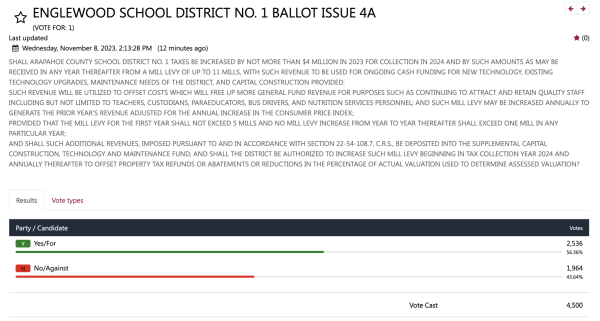
Ki Thorne is just one of many students who have noticed the effects of the budget cut at Englewood High School. “I’ve noticed a lack of materials in several classes and a sudden push to go almost fully electronic.”
Englewood Public Schools, (EPS), alongside other school districts in Colorado experienced an approximately 15% decrease in budget for the 2023/2024 school year. This has prompted several factors, such as several staff members being laid off, a decrease in resources such as printing materials, and a decrease in the ability to fund school events such as Homecoming and Prom.
Rosemary Wulf, the president of the teachers union of EPS, has been in education for ten years. She has seen dramatic drops in many services and staff in recent months, “I’ve never seen a staff layoff of this magnitude. I’ve definitely seen a pause in our budget increase, resulting in the staff at EHS not getting their yearly contractual raise because we don’t have the budget for it. However, 2 years ago everyone actually received their frozen raises back.”
She sees the budget issue in the school and in her classroom, “I’ve definitely been affected by both. I think we don’t have all the resources we need to make sure our students are at an advantage. I also can’t ensure my students who need extra help get the help they need. There’s only one of me to go around. We’re seeing larger class sizes, where I used to have 21-24 per class now I have 28-30 per class. That makes it really hard to get around and give the kids the learning they deserve. We also cut Co-teachers.”
Wulf also points out, that she has classes that should be split in two, “On the budget side, we’re not supposed to print anymore. The problem is our freshman need that printed and guided notebook to help make sense of the core content in their math and science classes. There’s something really kinesthetic about writing it on paper. This year we were looking at a $50 budget for the entire science department. Luckily, I was able to secure a $1,000 grant for more supplies in our department like duct tape, popsicle sticks, pens, paper, and glue so our students can have the hands-on learning they deserve. Kami doesn’t cut it. Writing that grant still took about 2 hours of my personal time.”
As the teachers union president for Englewood Schools District, Wulf said this is a concern for the years to come, ” I have concerns but I also have hope. I have hope that our district and our teacher’s association will really unite and push for better funding. It’s still not what we need but it is a step in the right direction. I’m an activist and very excited by some things coming down from the state level. To go lobby and fight for the funding our students deserve.”
Wulf also says she and other staff members are watching the state legislature, hoping for more money for schools, “I think the district is doing a lot right now. It’s up to the state legislature and how the tax dollars are redistributed. We are severely underfunded in the state of Colorado. We are ranked between 37th and 48th in education funding nationally. The state has a “budget stabilization” factor. Which is essentially an IOU given from the state treasurer to the schools. Even if the budget stabilization factor was eliminated our budget would still be at the level of 1989.”
We investigated further at the district level and spoke with our new superintendent, Joanne Polzin. She explained how the funding works at the state level, “There are several factors that go into determining funding for K-12 education. The first factor is the number of students we have enrolled in Englewood Schools which is called the Per Pupil Revenue (PPR). The second factor is the “At-Risk” factor that ensures the state gives additional funding to districts that serve populations that might be more impacted than others.”
Polzin agrees with Wulf and would like to see more money from the state, but explains some issues that face funding, “The Budget Stabilization Factor is added to the formula. The Budget Stabilization factor was a way for the state to withhold funding and give districts less because the government was experiencing a budget deficit or shortfall. The government has been using the Budget Stabilization factor since 2009 which means Englewood has been shorted over 33 million dollars in funding since 2009. Governor Polis, for the first time in over 14 years, has finally started to reduce the BS factor. Two of the reasons he could do this is because enrollment in K-12 schools has decreased and the state budget is healthy. While reducing the BS factor, the state is now starting to increase PPR, but Englewood has experienced declining enrollment. Therefore, we receive less money overall.”
We confirmed this information with Mary Cooper, the executive director of finance in the district. The bottom line is, that if enrollment numbers start to rise soon, our money troubles may be aided by more state funding.
One big way the district is looking to fill in the funding gaps is with a mill levy vote. As a part of the November 7th, 2023 local ballot, residents in Englewood will vote on a new MILL Levy. You can learn more about the Debt-Free Schools Mill Levy by clicking on the link.
















